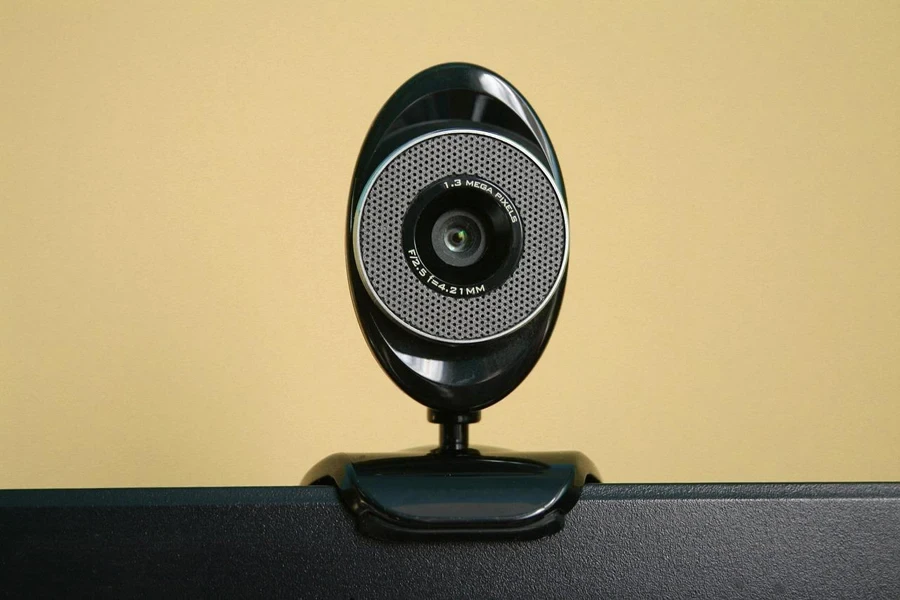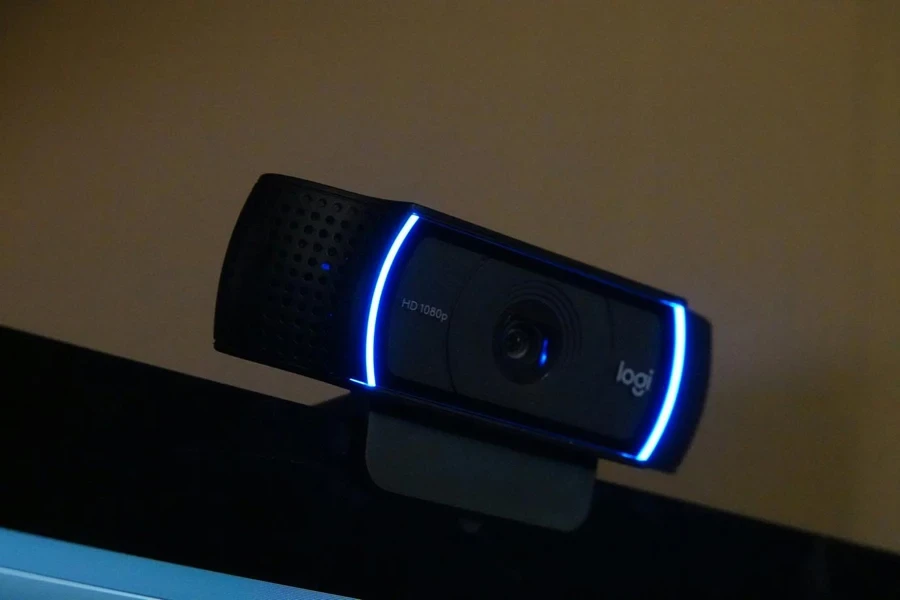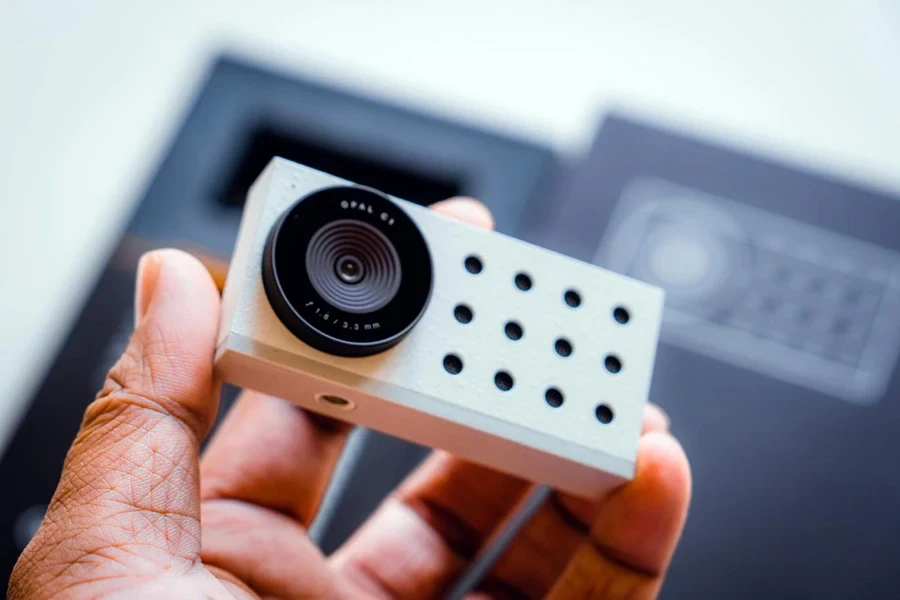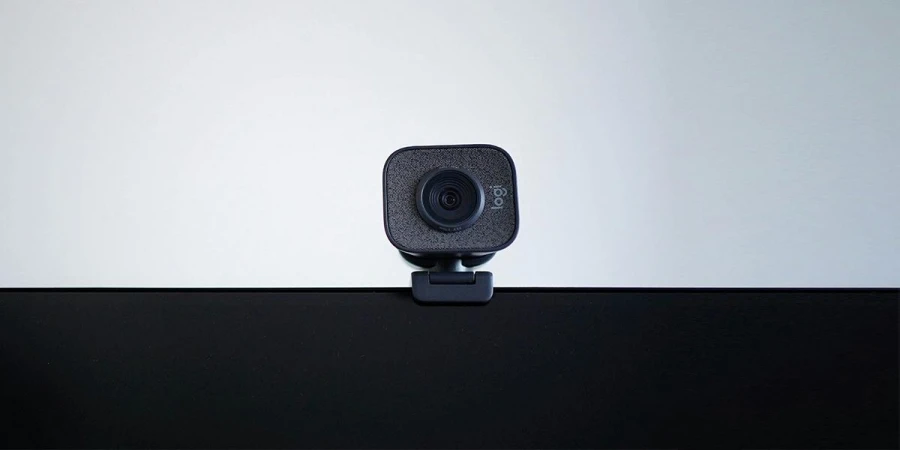In today’s era, webcams facilitate smooth communication, remote work setups, and content production. The webcam industry is expanding, fueled by technological advancements and evolving customer requirements.
Influential advancements like 4K resolution, AI-driven functionalities, and performance in low-light conditions are driving this growth forward significantly. Moreover, popular models raise the bar by incorporating noise-cancelling microphones and intelligent auto-focus capabilities. This guide explores these developments in detail, offering a glimpse into the changing dynamics of the webcam industry.
Table of Contents
● Market overview
● Key technology and design innovations
● Top-selling models driving market trends
● Conclusion
Market overview

Market scale and growth
Industry reports suggest that the worldwide webcam market is poised for expansion in the coming years. Its worth is estimated to surge from USD 8.54 billion in 2024 to USD 17.18 billion by 2034. Consequently, there’s an expected compound annual growth rate ( CAGR ) of 7.32 % over the specified period.
As of 2023, North America leads the market with a 48% revenue share due to its embrace of technology and innovation. Europe is projected to experience growth with an estimated compound annual growth rate (CAGR) of 6.05 %.
Driving trends
- Engaging in video calls for professional meetings and educational purposes in real-time.
- Remote monitoring of patients and telehealthcare services.
- Monitoring in public and private domains
The increasing need for video meetings in different industries is shaping the market due to the rise of remote work and online learning trends. There is a rising trend of using webcams in healthcare for patient care and telehealth services, also driving market growth. Moreover, concerns around security and surveillance in private sectors are pushing for more webcam installations, especially in the Asia Pacific region, where significant growth is expected in the future.
Key technology and design innovations
- Cutting-edge 4k resolution and advanced artificial intelligence capabilities.
- Backdrop options for meetings
- Improved ability to capture images in low light conditions.
- Improvements in privacy and security.
- Ease of carrying and aesthetics.

4K and AI-powered features
The move towards quality 4k webcams combined with AI represents major webcam technology progress today. 4K webcams, with resolutions of 3840 x 2160 pixels, provide unparalleled clarity and detail, enhancing video quality significantly.
Features powered by AI, like facial recognition, utilize machine learning algorithms to detect and center on faces. At the same time, auto-tracking tech tracks the subject’s movements to keep them centered in the frame. Smart scene detection adjusts lighting and exposure settings in time, enhancing image quality according to the environment.
Virtual backgrounds
Virtual backgrounds have gained popularity due to progress in background replacement technology algorithms that utilize edge detection and segmentation methods to distinguish subjects from backgrounds effectively.
This feature enables the software to substitute the background with virtual settings or personalized images effortlessly. The ability to perform real-time processing ensures that despite any movement, the background stays consistently replaced without any imperfections. This enhances interactions to be more immersive and polished.

Enhanced low-light performance
Advancements in sensor technology and noise mitigation have significantly enhanced the ability of webcams to function better in lighting situations nowadays. Modern webcams have CMOS sensors that can capture more light and sophisticated image processing methods to diminish noise levels.
High Dynamic Range (HDR) ensures users can see both bright parts clearly in the picture for a balanced view while automatically adjusting brightness and contrast in different lighting conditions to maintain top-notch image quality.
Privacy and security enhancements
Privacy and security are now considerations in developing webcams, as they include hardware-based encryption and advanced methods for user authentication. They help to safeguard video data transmission effectively and prevent unauthorized access.
Some webcams come equipped with biometric authentication features, like fingerprint scanners, to enhance security measures further. Moreover, it has become the norm for webcams to have privacy shutters that cover the lens when not in use, ensuring users peace of mind by safeguarding them against potential surveillance.
Portability and design
The shift towards more portable webcam styles has brought in functionalities such as magnetic installation and gimbal stabilization technology for smoother video capture experiences.
Gimbal stabilization technology used in webcams is borrowed from the drone and camera sectors to maintain stability during video calls when moving around. These webcams have foldable and lightweight designs to enhance portability for always moving professionals.
Top-selling models driving market trends

Different resolution and frame rate
The growing popularity of webcams that provide high-resolution video at 1080P and 4k with fast frame rates is driven by users’ desire for top-quality video output. An instance would be the Logitech C920 webcam, which delivers 1080P resolution at 30 frames per second (fps), offering a blend of sharpness and smooth movement that caters well to video conferences and live streaming sessions.
High-quality webcams like the Elgot Facecam Pro that offer 4k resolution at 60 frames per second (fps) provide seamless video output crucial for content creators seeking precise and top-notch video quality.
Budget-friendly webcam
Affordable webcam options provide improvements over basic 720 p webcams while maintaining high-quality standards. The Logitech HD Webcam C310 is a prime example, as it offers 720 p resolution and features such as automatic light adjustment and noise reduction. They are perfect for everyday video chats and working from home.
Despite being more affordable than others in its category, this model enhances picture and sound quality, making it a great bargain for consumers. Those looking for economical choices can discover models that cater to their fundamental requirements.

Professional and premium options
Top-notch webcams designed for streamers and creators come packed with cutting-edge functionalities and top-notch image clarity features to enhance the overall experience during live broadcasts or content creation sessions. Take the Obsbot Tiny 2 as an example. Boasting a 4k resolution display along with a high-quality lens that excels in low light settings and HDR support for delivering vivid and well-balanced visuals. Moreover, it also includes AI-driven tracking capabilities to ensure the subject stays focused when on the move and a built-in ring light that guarantees ideal lighting conditions for creating polished video content. Opt for high-quality models to guarantee notch video and audio output crucial for professional tasks and content development.
Model with Integrated features
Top webcam models have built-in functionalities to improve user experience and performance quality. For example, the Razer Kiyo Pro has noise-canceling microphones that guarantee crystal audio recording by removing unwanted background noise. Moreover, it offers a field of vision (FOV) that enables users to tailor the camera angle according to their requirements. Whether for a detailed close-up or a broader view. This model’s advanced autofocus feature utilizes algorithms to keep the subject sharp and focused even when in motion, a vital aspect for accurately capturing dynamic video content.
Conclusion
The webcam industry is growing quickly due to technological advancements and consumer preference shifts. With upgrades like 4k resolution, smart features powered by AI technology, and improvements in security and convenience, webcams are changing to cater to the requirements of work, online learning, and creating quality professional content.
These advancements establish benchmarks for video communication tools and are becoming essential in various industries. Keeping up to date with these developments guarantees that companies and individuals stay ahead in video communication.




